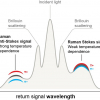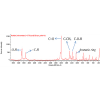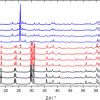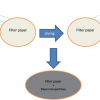Neil A. Macleod, Charlotte Eliassona and Pavel Matousek*
Central Laser Facility, Science and Technology Facilities Council, Rutherford Appleton Laboratory, Harwell Science and Innovation Campus, Didcot, Oxfordshire OX11 0QX, United Kingdom. E-mail: [email protected]
apresent address: PeTek Oseberg South, Hydro, Sandsliveien 90, postboks 7190, 5020 Bergen, Norway
Introduction
A number of analytical applications in the area of security screening, medical diagnosis, drug authentication and quality control often require non-invasive probing of diffusely scattering (turbid) media in order to obtain chemical characterisation of deep-lying sample regions. Examples include non-invasive disease diagnosis, the detection of concealed explosives and illicit materials, the identification of counterfeit drugs and quality control applications in the pharmaceutical industry.
Raman spectroscopy holds particular promise in this area due to its inherently high chemical specificity [exceeding that of near infrared (NIR) absorption spectroscopy and comparable with mid-infrared and THz methods], the ability to probe samples in the presence of water (the Raman scattering cross-section of water is very low) and its high penetration depth into turbid non-absorbing or weakly absorbing samples. On the downside, the technique is restricted to samples that do not exhibit strong fluorescence emission although this problem can, in the majority of cases, be avoided by using NIR excitation. Until recently, Raman techniques have generally been confined to applications involving surface layers of turbid media due to limitations imposed by the backscattering collection geometry common to the majority of commercial Raman probes. In principle, confocal Raman microscopy can potentially resolve objects to depths of up to several hundred micrometres. Deeper layers cannot be readily resolved and, typically, are overwhelmed by Raman and fluorescence signals emanating from the surface layer.


















